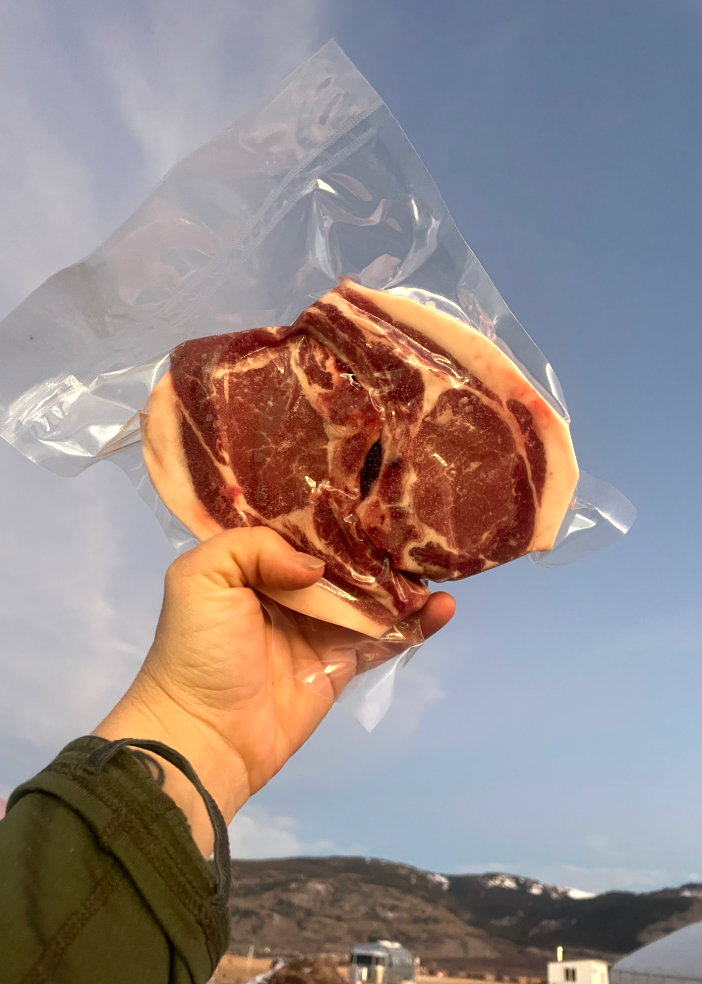Why Reducing PUFAs Could Be the Best Thing You Do for Your Health in 2025
It’s 2025 — you don’t have time to waste chasing bunk nutrition fads.
This is the year to put your health on the front burner and make high-impact choices that actually fuel your body, your creativity, and your goals. And yes — it should be fun and delicious, too.
Enter: fat.
But not just any fat.
Not All Fats Are Created Equal
If you’ve started paying attention to PUFAs (polyunsaturated fatty acids) in your diet, you’re not alone — and you’re onto something important.
Maybe you’ve heard that pork and eggs are too high in PUFAs to fit into a healthy diet. If you’re thinking about conventional, factory-farmed pork and eggs, you’d be right. But pasture-raised, rotationally grazed animals are a whole different story.
At Late Bloomer Ranch, we prioritize low-PUFA, high-quality saturated fats by carefully managing our animals' diet and rotational grazing systems — no corn and soy dependency, no shortcuts.
How Agriculture Changed Our Fat Intake
Post-World War II, the rise of industrial corn, soy, canola, sunflower, and safflower production changed the landscape of American agriculture — and your food.
Today, feeds like soybean meal (3x higher in PUFAs than traditional grains like barley) dominate livestock diets. As a result, most commercial pork and eggs today are loaded with inflammatory, unstable fats that:
-
Downregulate metabolism
-
Increase body fat storage
-
Promote oxidative stress and inflammation
A hundred years ago, linoleic acid (an Omega-6 PUFA) made up about 1–2% of the human diet. Today? It’s estimated at up to 25% — a radical shift tied to the rise in chronic illness, metabolic dysfunction, and obesity.
Why Saturated Fats Matter
Saturated fats aren't the enemy — they're essential.
-
Your brain is mostly fat.
-
Every cell membrane in your body relies on saturated fat.
-
Vital nutrients like Vitamins A, D, E, and K are transported and absorbed through fat.
Mother’s milk? Nearly 50% saturated fat — nature’s original fuel for growth, energy, and resilience.
When you prioritize clean, saturated fats over unstable PUFAs, you support:
-
Stable energy and mood
-
Faster metabolism
-
Better immune and cognitive function
-
Reduced inflammation
Why Our Pork and Eggs Are Different
Most concerns about pork’s healthfulness are based on commercial pork — animals raised indoors on corn, soy, pharmaceuticals, and processed feed.
At Late Bloomer Ranch, we do it differently:
-
Pasture-raised pigs and hens
-
Regeneratively managed land
-
No growth hormones, no junk feed, no shortcuts
The result?
Low-PUFA, nutrient-dense pork and eggs that support metabolic health, natural energy, and better living.
Customers tell us every day how much more energy and clarity they feel when they switch to Late Bloomer Ranch meats — and we see it firsthand in the health of our animals and our soil.
Ready to Feel Better?
Going fully zero-PUFA isn’t necessary — or even advisable. But significantly reducing your PUFA intake and prioritizing clean saturated fats is one of the highest-impact health moves you can make.
Choosing Late Bloomer Ranch pork and eggs means choosing:
-
Real nourishment
-
Regenerative agriculture
-
True metabolic support
Fuel your body the way nature intended.
Sources:
PMC2974200
PMC8805510
PMC10445668

